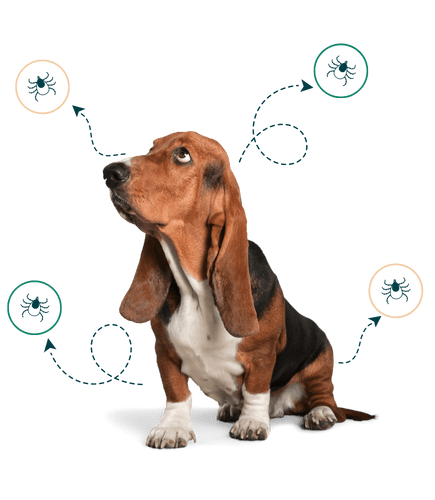
It's flea season!
Fleas are the leading cause of skin illness in pets, causing anything from itching to weeping sores, and infection.
Many flea-infested pets develop skin illnesses as a result of frequent scratching, and for others even one flea bite may trigger an auto-immune reaction.
How to know if your pet has fleas?
Here are 5 signs our veterinatians recommend watching out for:

Itching & Biting
Fleabites can cause irritation to pets, often making them scratch themselves so aggressively that it can have lasting effects on their health.
Red Pimples
Flea bite saliva can also be allergenic for some dogs and cats, causing rashes or lesions anywhere on the body.

Pale Gums
Pale gums are a common sign of anemia and can be an indication your pet has a serious case of flea infestation.
Flea Dirt
Also known as flea feces, “flea dirt” look like brownish-black dirt, that turns red under water.

Hair Loss
Hair loss can be a reaction to flea bites. Dogs or cats may also pull out their own hair due to the continuous biting or licking of the flea bite areas.

Itching and/or Biting
Fleas are very active insects, feeding on blood from pets and people. Fleabites can cause irritation to pets, often making them scratch themselves so aggressively that it can have lasting effects on their health.
Red Pimples or Bumps
Flea bite saliva can also be allergenic for some dogs and cats. Flea bite hypersensitivity can cause rashes or lesions anywhere on the body: belly, under the legs, at the base of their tail, or on their behind.

Hair Loss
Hair loss, or alopecia, can be due to several things, including a reaction to flea bites. Dogs or cats may also pull out some of their own hair due to the continuous biting or licking of the flea bite areas.
Flea Dirt
Also known as flea feces, “flea dirt” look like brownish-black dirt. If you are unsure whether it is real dirt or flea dirt, run it under water: If it turns red, then it’s flea dirt and you’ll have to treat it accordingly.

Pale Gums
Pale gums are a common sign of anemia and can be an indication your pet has a serious case of flea infestation.

Trick that may help you to search for flea dirt in the house

Check your environment
If your family pet has fleas, it’s likely that your yard and house will become a breeding ground. Acting quickly is key to preventing spread.
One trick that may help you to search for flea dirt in the house is to place a white piece of paper on the floor next to or beneath your pet while coming through their hair. Flea dirt (flea feces) will fall off of the pet’s skin and land on the paper.
Treatments
Treatment should begin as soon as possible as signs of fleas appear and should be repeated regularly.

Do you think your dog may have fleas? Prompt treatment is key.
Our veterinarians will help you choose the correct product based on your pet’s age, breed, and health status.

